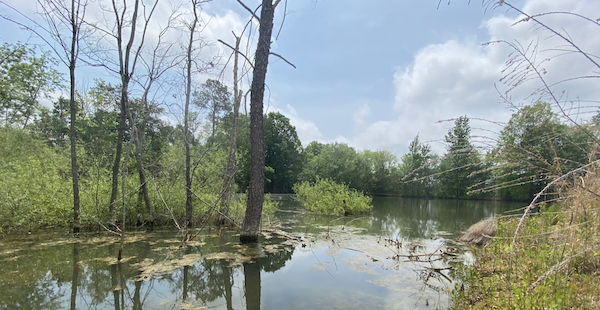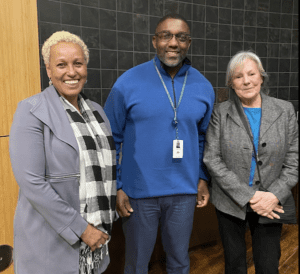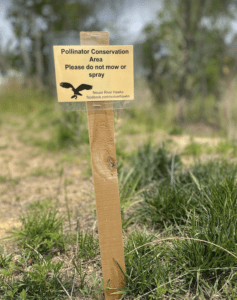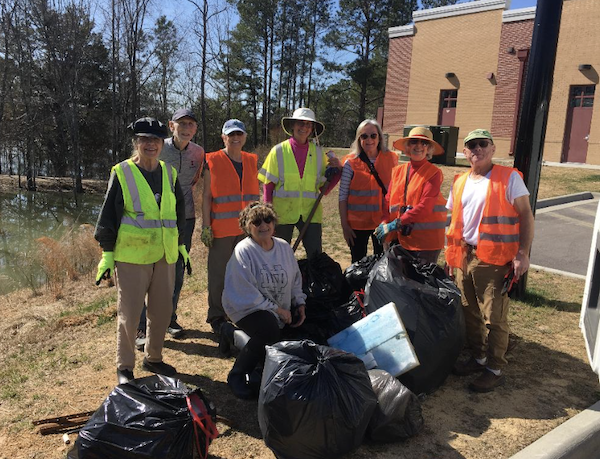Local Commercial Property Blooms as Pollinator Pathway Project

Pollinator Pathway Project
Guest blog by Kate Gavaghan, Sci In The Tri writer and member of North Carolina Wildlife Federation’s Neuse River Hawks Community Wildlife Chapter.
You might not expect to see butterflies, hummingbirds, swimming turtles and nesting bluebirds at a busy commercial property. But at one expanding shopping area in Wake Forest, N.C., that’s exactly what you’ll find.
The Pollinator Project at 1021 Forestville Road is a joint effort between property owner Optimal Equity Corporation and the Neuse River Hawks (NRH), a local chapter of the North Carolina Wildlife Federation (NCWF).
“Neuse River Hawks have been designing and creating pollinator gardens in local public parks for several years now,” said NRH member and project co-manager Laura Robinson. These parks draw attention both for their beauty and their conservation benefits. They’re examples in a growing movement that goes by several names: pollinator gardening, conservation landscaping, backyard ecology, re-wilding. All share the goal of supporting wildlife and replacing habitat lost to development.

NRH Pollinator Project Co-managers Jeannette Mobley and Laura Robinson, pictured here with Wake Forest Parks Director Ruben Wall.
Robinson and fellow NRH member Jeannette Mobley wondered if private developers might be interested in this mission as well, so they reached out to a few local companies. Angelique Harris, Operations Manager for Optimal Equity, was intrigued. “I’m all about teachable moments,” she said.
Harris met to discuss options with the NRH team and was impressed by Robinson and Mobley’s knowledge and passion. “They knew every single plant and flower,” she said. “That education alone was enough for me.”
With a “thumbs up” from company owner Robert Shaar, they signed on to be the Pollinator Project’s first commercial demonstration site.




